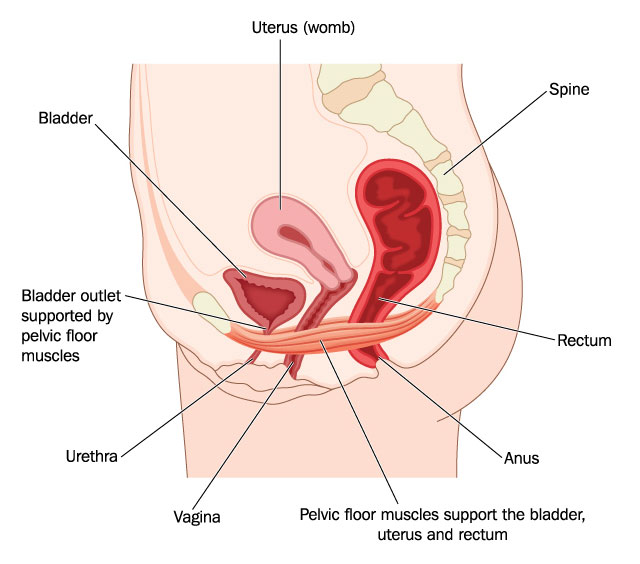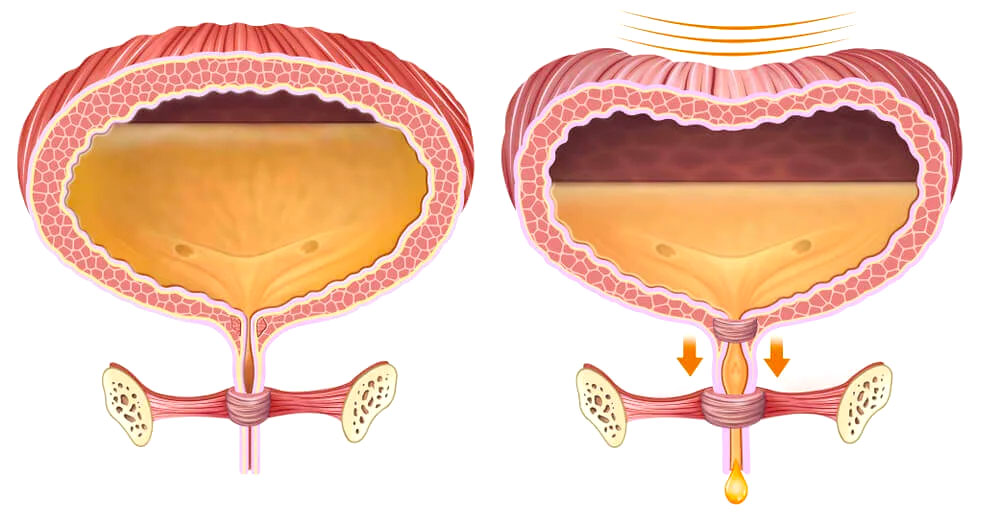
Importance of Checking the Pelvic Floor
The pelvic floor is a complex interplay of specialised connective tissue and muscles which support the bladder, uterus and bowel within the pelvic cavity. Whenever we walk, jump, lunge, squat or move, the pelvic floor resists the forces of gravity to hold the pelvic organs in place. This makes the pelvic floor a vital part of healthy bladder, bowel and sexual function.
When these specialised tissues and muscles become weakened or damaged, disorders of the pelvic floor can arise. Disorders such as incontinence and pelvic organ prolapse can arise, and can have debilitating effects on woman’s quality of life and self-esteem.

In a national US survey(1), 10% of women in only their 20’s and 30’s reporting having at least one pelvic floor disorder. This number increases with age with 27% of women between 40-59years old have 1 or more pelvic disorders.
Pelvic Floor Disorders and Physical Activity
Research has also begun to show us that pelvic floor disorders are more common in women who are physically active than those who aren’t. Compared to their more sedentary counterparts, female athletes are almost three times more likely to suffer from urinary incontinence(2) (i.e. involuntary leakage of urine).
Considering the multitude of health benefits we receive from regular exercise, this definitely is not a reason to skip the gym. However, it does highlight the importance of everyday women participating in individualised pelvic floor training. In fact, for many of these conditions, curative rates using pelvic floor exercises ranging between 44-70%(3).

Importance of Getting a Pelvic Floor Assessment
It is important to remember that pelvic floor disorders are not normal, or a “natural part of aging”(4). Although the rates of pelvic floor disorders increase with age – a large part of this is just due to disuse. Nowadays, there are many services dedicated to treat these conditions and countless options to improve symptoms.
Accordingly, a pelvic floor assessment allows a Women’s Health Physiotherapist to:
- Assess the general health and function of the pelvic floor muscles and connective tissue,
- Identify any pelvic floor disorders – which we can then begin to treat, and
- Assess for a women’s risk for developing pelvic floor disorders in the future, with their given sport

References:
1. Nygaard I, Barber MD, Burgio KL, Kenton K, Meikle S, Schaffer J, Spino C, Whitehead WE, Wu J, Brody DJ; Pelvic Floor Disorders Network. Prevalence of symptomatic pelvic floor disorders in US women. JAMA. 2008 Sep 17;300(11):1311-6. doi: 10.1001/jama.300.11.1311. PubMed PMID: 18799443; PubMed Central PMCID: PMC2918416.
2. Teixeira, Renata & Colla, Cássia & Sbruzzi, Graciele & Mallmann, Anelise & Paiva, LL. (2018). Prevalence of urinary incontinence in female athletes: a systematic review with meta-analysis. International Urogynecology Journal. 29. 1-9. 10.1007/s00192-018-3651-1.
3. Bø K. Urinary incontinence, pelvic floor dysfunction, exercise and sport. Sports Med. 2004;34(7):451-64. Review. PubMed PMID: 15233598.
4. Chen CCG, Cox JT, Yuan C, Thomaier L, Dutta S. Knowledge of pelvic floor disorders in women seeking primary care: a cross-sectional study. BMC Fam Pract. 2019 May 23;20(1):70. doi: 10.1186/s12875-019-0958-z. PubMed PMID: 31122187; PubMed Central PMCID: PMC6533649.